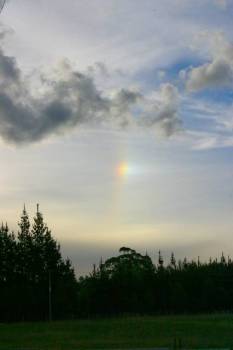Sun dogs: Snow-bow sky show
Published 6:15 am Friday, December 29, 2017
I’ve seen sundogs twice already this year, so thought it good to touch on them. They are those bright spots of light you sometimes see on one or both sides of the sun, occasionally accompanied by a halo around the sun. Science guys call them parhelions, which means “beside the sun”. They can occur anytime of the year.
Sun dogs are an atmospheric phenomenon sort of like a rainbow, except they are caused by snow instead of rain. Cirrus are high, thin, wispy clouds made up mostly of flat hexagonal ice crystals. These crystals act like prisms, bending light rays passing through them at a 22 degree angle from an observer’s line of sight to the sun, forming a spot of light that appears horizontal to the sun. Usually two will form on the left and right of the sun, but sometimes if the cloud cover is not continuous there’s only one. They can be very bright, almost like a mini second sun, but other times appear as only a colored smudge. Sun dogs are red-colored on the side nearest the sun, with the colors shifting from orange to blue farther out. The colors often overlap a lot, and so are muted to where you may only be able to make out a couple of splotchy colors, usually red, orange, or yellow. For Sun dogs to occur, the flat ice crystals must be oriented horizontally. If the crystals are randomly oriented, a complete ring around the sun can be seen, called a halo or parhelic circle.
Sun dogs have been described in writings as far back as 350 BC. One of the battles fought during the War of the Roses may have been won because of a sun dog. In 1461, just before the Battle of Mortimer’s Cross, a complete parhelion appeared as “three suns”. The Yorkist commander Edward (later King Edward IV) convinced his initially frightened troops that it represented the Holy Trinity, which inspired them to win a decisive battle.
Sun dogs appear in weather lore as predictors of bad weather, and the meteorologists agree. The high cirrus clouds that cause sun dogs may be a precursor of moisture moving into the area from an approaching low front. So sun dogs are indicators that the weather will change in the next 18-36 hours.
Steve Roark is the area forester in Tazewell for the Tennessee Department of Agriculture, Forestry Division.







